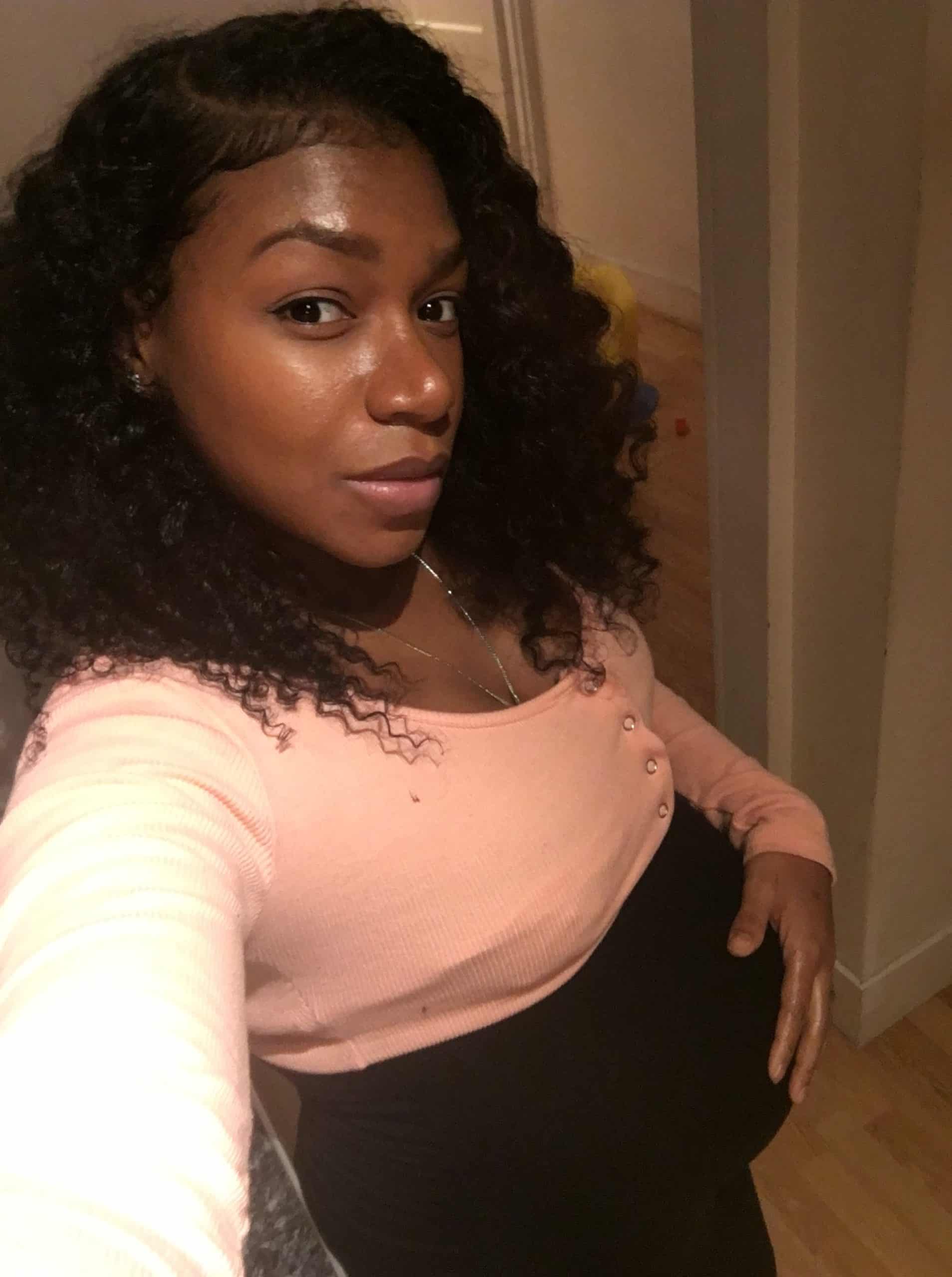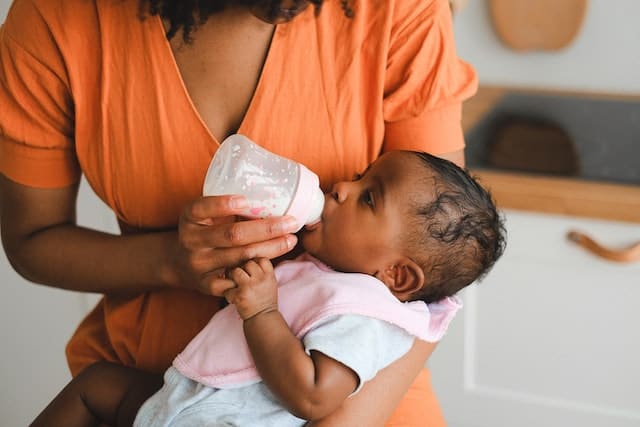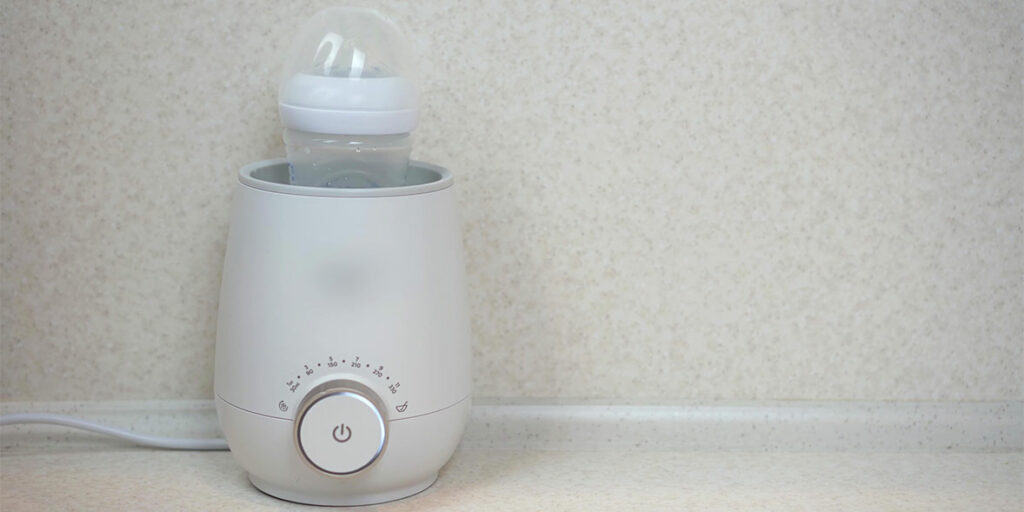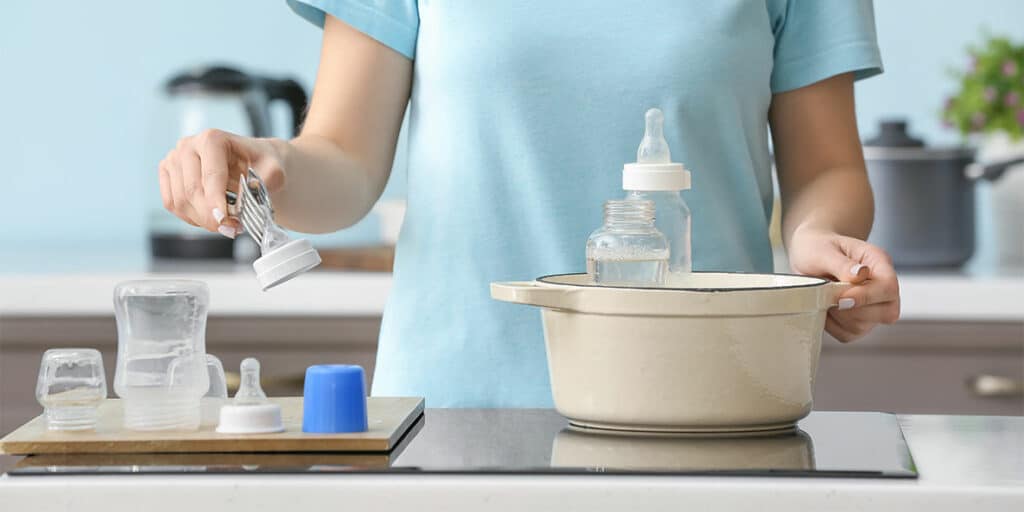Warming bottles on the go can be a challenging task for parents and caregivers. Whether you’re traveling, running errands, or simply out and about, having a warm bottle ready for your little one is essential.
However, without the proper tools and knowledge, it can be difficult to warm a bottle quickly and safely. In this article, we will explore the best ways to warm bottles on the go, including tips and tricks for safe and efficient warming.
One of the most important things to consider when warming a bottle on the go is the importance of maintaining a safe temperature. Overheating a bottle can cause burns and other injuries, while underheating can lead to bacterial growth and other health risks.
Choosing the right bottle warmer and understanding how to use it properly can help ensure that your baby’s bottle is warmed to the perfect temperature every time. In this article, we will discuss the different types of bottle warmers available and provide tips for choosing the right one for your needs.
Key Takeaways
- Understanding the importance of maintaining a safe temperature when warming bottles on the go is crucial for your baby’s health and safety.
- Choosing the right bottle warmer and understanding how to use it properly are key factors in efficient and safe warming.
- With the right tools and knowledge, warming bottles on the go can be a quick and easy task for parents and caregivers.
Understanding the Importance of Warming Bottles
When it comes to feeding your baby, warming bottles is an essential task that needs to be done correctly. Babies prefer warm milk as it is closer to their body temperature, making it easier for them to digest. Therefore, understanding the importance of warming bottles is crucial for parents.
Warming bottles is not just about making the milk warm; it also helps to preserve the nutrients in the milk. Heating breastmilk or formula too much can cause damage to the essential nutrients present in it, making it less nutritional for the baby.
Warming bottles to the right temperature ensures that the baby gets all the necessary nutrients from the milk.
Another reason why warming bottles is important is that it helps to soothe your baby. Cold milk can be uncomfortable for the baby, and it might cause them to cry or refuse to drink. Warming the milk to the right temperature can help calm your baby and make feeding time a more enjoyable experience.
It is also important to note that not all baby bottles are safe to be heated in the microwave. Some bottles might melt or leak when heated, causing harm to the baby. Therefore, it is essential to read the instructions on the baby bottle and follow the manufacturer’s guidelines.
In conclusion, warming bottles is an essential task that needs to be done correctly. It helps to preserve the nutrients in the milk, soothe the baby, and make feeding time more enjoyable.
Parents should always ensure that they warm the milk to the right temperature and follow the manufacturer’s guidelines when heating baby bottles.
Choosing the Right Bottle Warmer
When it comes to warming bottles on the go, choosing the right bottle warmer can make all the difference. There are several factors to consider when selecting a bottle warmer that will suit your needs. Here are some things to keep in mind:
Portability
If you’re looking for a bottle warmer that you can take with you on the go, portability is key. Look for a portable bottle warmer that is compact, lightweight, and easy to carry. Some popular options for portable bottle warmers include the Tommee Tippee Travel Bottle and Food Warmer and the Yoomi Self-Warming Bottle.
Heating Method
There are several different types of bottle warmers available, each with their own heating method. Some bottle warmers use steam to heat the bottle, while others use a warm water bath. Consider which heating method will work best for your needs and preferences.
Compatibility
Make sure that the bottle warmer you choose is compatible with the type of bottle you plan to use. Some bottle warmers are designed specifically for certain brands or types of bottles, so be sure to check the product specifications before making a purchase.
Ease of Use
When you’re on the go, you want a bottle warmer that is easy to use and doesn’t require a lot of time or effort. Look for a bottle warmer that is simple to operate and doesn’t have a lot of complicated settings or features.
Safety Features
Safety should always be a top priority when it comes to warming bottles. Look for a bottle warmer that has safety features such as automatic shut-off or overheating protection.
Overall, when choosing a bottle warmer for on-the-go use, it’s important to consider factors such as portability, heating method, compatibility, ease of use, and safety features. By keeping these factors in mind, you can find a bottle warmer that will make feeding your baby on the go a breeze.
Steps to Warm Bottles On the Go
When it comes to warming bottles on the go, there are a few steps to follow to ensure that the process is quick, safe, and efficient. Here are some steps to consider:
- Prepare the bottle: Before leaving home, prepare the bottle with the desired amount of formula or breastmilk. This will save time and make the process easier when it’s time to warm the bottle.
- Use hot water: One of the easiest ways to warm bottles on the go is to use hot water. Simply fill a thermos or insulated bottle with hot water and place the bottle inside for a few minutes. This method is quick and requires no electricity.
- Use warm water: Another option is to use warm water. Fill a container with warm water and place the bottle inside for a few minutes. This method takes a bit longer than using hot water, but it’s still a safe and efficient way to warm bottles on the go.
- Consider a bottle warmer: If you frequently warm bottles on the go, consider investing in a portable bottle warmer. These devices are designed to warm bottles quickly and safely, making them a great option for busy parents.
- Test the temperature: Before feeding the baby, always test the temperature of the bottle to ensure that it’s not too hot or too cold. A good rule of thumb is to shake a few drops of formula or breastmilk onto the inside of your wrist. If it feels warm, but not hot, the bottle is ready to use.
Overall, warming bottles on the go doesn’t have to be a challenge. By following these simple steps, parents can safely and efficiently warm bottles while out and about.
Using Thermos for Warming Bottles
A thermos is an excellent option for warming bottles on the go. It is a portable container that can keep hot water warm for hours. Here are a few tips for using a thermos to warm bottles:
- Fill the thermos with hot water: Fill the thermos with hot water before leaving the house. Make sure the water is at the right temperature for your baby’s bottle.
- Use a baby thermos: A baby thermos is a smaller version of a regular thermos. It is designed specifically for warming baby bottles. It is easy to carry and can keep water warm for hours.
- Use a thermal flask: A thermal flask is another option for warming bottles on the go. It is similar to a thermos but has a wider mouth. This makes it easier to pour the water into the bottle.
- Check the temperature: Before using the water to warm the bottle, check the temperature with a thermometer. Make sure the water is at the right temperature for your baby’s bottle.
- Be careful: When using hot water to warm a bottle, be careful not to burn yourself or your baby. Test the temperature of the bottle before giving it to your baby.
Using a thermos to warm bottles on the go is a convenient and practical solution. With a little preparation, you can ensure that your baby’s bottle is always at the right temperature.
Warming Bottles in a Restaurant
When dining out with a baby, it can be challenging to keep their milk at the right temperature. Fortunately, many restaurants are willing to help parents warm up their baby’s bottle. Here are some tips for warming bottles in a restaurant:
- Ask the server for assistance: Most restaurants are happy to help parents warm up their baby’s bottle. Simply ask the server for assistance, and they will likely bring over a bowl of hot water to warm up the bottle.
- Bring your own bottle warmer: If you’re worried about the temperature of the water at the restaurant, you can bring your own bottle warmer. These devices are small and portable, making them easy to bring along on your outings.
- Use a thermos: If you’re going to be out for a while and need to keep several bottles warm, consider bringing a thermos filled with hot water. This way, you can quickly warm up a bottle whenever your baby needs it.
- Check the temperature: Before giving your baby the bottle, be sure to check the temperature to make sure it’s not too hot or too cold. You can do this by testing a few drops on the inside of your wrist.
When warming bottles in a restaurant, it’s essential to be polite and respectful of the staff. Remember that they are there to help you, so be sure to thank them for their assistance. Additionally, be sure to bring everything you need, including extra bottles and formula, so you’re prepared for any situation.
Safe Storage of Warmed Bottles
After warming a baby bottle on the go, it is important to store it properly to avoid any potential health risks. Here are some tips for safe storage of warmed bottles:
- Use a cooler: If you are traveling long distances, it is recommended to use a cooler to keep the bottles at a safe temperature. A cooler with ice packs or frozen gel packs can keep the bottles cool for several hours. Make sure to check the temperature of the bottles before feeding the baby.
- Insulated bottle bag: An insulated bottle bag can help keep the bottles warm for a short period of time. These bags are designed to maintain the temperature of the bottle and can be useful when traveling short distances.
- Store in a clean area: When storing the bottles, make sure to keep them in a clean and hygienic area. Avoid storing them near any contaminated surfaces or areas where there is a risk of contamination.
- Use within a reasonable time frame: It is important to use the warmed bottles within a reasonable time frame to avoid any potential health risks. The general guideline is to use the bottle within 2 hours of warming it.
- Check the temperature: Before feeding the baby, make sure to check the temperature of the bottle. The ideal temperature for a baby bottle is between 98°F and 100°F. Use a thermometer to check the temperature of the bottle to ensure it is not too hot or too cold.
By following these tips, parents can ensure that their baby’s warmed bottles are stored safely and at the appropriate temperature.
Warming Bottles with Hand Warmers
When on the go, warming bottles can be a challenge. One solution is to use hand warmers. Hand warmers are small packets that generate heat when exposed to air. They are commonly used by outdoor enthusiasts to keep their hands warm in cold weather.
To warm a bottle with hand warmers, simply activate the hand warmer by removing it from its packaging and exposing it to air. Then, place the hand warmer in a bottle warmer or wrap it around the bottle. The heat from the hand warmer will warm the bottle.
One brand of hand warmer that works well for warming bottles is Hothands. Hothands hand warmers are available in a variety of sizes and shapes, including rectangular and circular shapes that are perfect for wrapping around a bottle.
It is important to note that hand warmers should not be placed directly in the bottle or in contact with the formula or breast milk. This can cause the bottle to become too hot and potentially burn the baby’s mouth. Instead, use a bottle warmer or wrap the hand warmer around the outside of the bottle.
Overall, warming bottles with hand warmers is a convenient solution for parents on the go. It is important to use caution and follow instructions to ensure the safety of the baby.
Editorial Pick: How Long to Microwave Milk?
Understanding Different Types of Milk
When it comes to warming bottles on the go, it’s important to understand the different types of milk that you may be dealing with. Here are some of the most common types of milk:
Breast Milk
Breast milk is the natural milk produced by a mother for her baby. It contains all the necessary nutrients and antibodies that a baby needs to grow and stay healthy.
Breast milk can be stored in the refrigerator or freezer and warmed up before feeding. It’s important to never microwave breast milk, as it can create hot spots that can burn your baby’s mouth.
Formula
Formula is a type of milk that is made to mimic the nutrients found in breast milk. It comes in powder, liquid concentrate, and ready-to-feed forms. Formula can be stored at room temperature and does not need to be refrigerated until it’s been opened.
It’s important to follow the instructions on the package when preparing formula, as using too much or too little water can affect the nutrients your baby is receiving.
Ready-to-Feed Formula
Ready-to-feed formula is a convenient option for on-the-go feedings. It comes in pre-mixed bottles that can be opened and fed to your baby without any preparation. However, ready-to-feed formula can be more expensive than other types of formula, and it’s important to check the expiration date before using.
Formula Milk
Formula milk is a type of milk that has been fortified with nutrients to make it a suitable substitute for breast milk. It can be used as a supplement or replacement for breast milk, and it comes in a variety of forms, including powder, liquid concentrate, and ready-to-feed. It’s important to follow the instructions on the package when preparing formula milk, as using too much or too little water can affect the nutrients your baby is receiving.
Overall, understanding the different types of milk that you may be dealing with can help you choose the best method for warming your baby’s bottle on the go.
Avoiding Common Mistakes
Warming a bottle on the go can be a challenge, especially for new parents. It’s important to avoid common mistakes to ensure the safety and well-being of your baby. Here are some tips to help you avoid common mistakes when warming bottles on the go:
Don’t Burn the Bottle
One of the most common mistakes when warming a bottle on the go is burning the bottle. This can happen when the bottle is placed too close to a heat source or when it’s left in the warmer for too long.
To avoid burning the bottle, it’s important to use a bottle warmer that is designed for travel and has an automatic shut-off feature. Additionally, always check the temperature of the bottle before feeding it to your baby.
Avoid Microwaving
Microwaving a bottle is not recommended as it can create hot spots that can burn your baby’s mouth. It can also damage the nutrients in the milk. If you must use a microwave, make sure to use a microwave-safe bottle and follow the manufacturer’s instructions carefully.
Check the Ideal Temperature
It’s important to warm the bottle to the ideal temperature to ensure that your baby is comfortable and safe. The ideal temperature for a bottle is around body temperature, which is approximately 98.6°F (37°C). To check the temperature, test the milk on the inside of your wrist or use a bottle thermometer.
By following these tips, you can avoid common mistakes when warming bottles on the go and ensure that your baby is safe and comfortable.
Considerations when Traveling with a Baby
Traveling with a baby requires careful planning and preparation. Here are some considerations to keep in mind when traveling with a baby:
1. Safety First
The safety of the baby should always be the top priority when traveling. Ensure that the baby’s car seat is installed correctly, and always use it when traveling by car. Additionally, it is important to bring a first aid kit and any necessary medication for the baby.
2. Packing
When packing for a trip with a baby, it is important to bring all the necessary items such as diapers, wipes, formula, bottles, and extra clothes. It is also a good idea to pack a few toys or books to keep the baby entertained during the trip.
3. Plan Ahead
When traveling with a baby, it is important to plan ahead. Consider the baby’s feeding and sleeping schedule when making travel arrangements. It may be necessary to adjust the schedule to accommodate travel plans.
4. Be Flexible
Traveling with a baby can be unpredictable, so it is important to be flexible. Be prepared for delays and unexpected changes in plans. It is also important to be patient and understanding when the baby becomes fussy or upset during the trip.
5. Know Your Destination
Before traveling with a baby, it is important to research the destination. This includes finding out about the weather, local customs, and any potential health risks. It is also important to locate nearby hospitals or medical facilities in case of an emergency.
By keeping these considerations in mind, traveling with a baby can be a safe and enjoyable experience for everyone involved.
Frequently Asked Questions
What are some options for warming bottles while on the go?
There are several options for warming bottles while on the go, including using a bottle warmer, hot water, or a portable bottle warmer that uses battery or car adapter.
Is it safe to warm a baby bottle in the microwave?
It is not recommended to warm a baby bottle in the microwave as it can cause hot spots that can burn the baby’s mouth.
How can I keep my baby’s bottle warm when traveling?
To keep your baby’s bottle warm when traveling, you can use a portable bottle warmer that uses battery or car adapter, or place the bottle in a thermos or insulated bag.
What is the ideal temperature for warming a baby bottle?
The ideal temperature for warming a baby bottle is around body temperature, which is approximately 98.6°F (37°C).
Can I use a 12V bottle warmer in my car?
Yes, you can use a 12V bottle warmer in your car as long as it is compatible with your car’s voltage and has an adapter that fits your car’s socket.
What are some tips for using a bottle warmer while on the go?
Some tips for using a bottle warmer while on the go include preheating the warmer before use, checking the temperature of the bottle before feeding, and using a timer to avoid over-warming the bottle.
Related Post: How Long Does A Can of Formula Last?

Iesha is a loving mother of 2 beautiful children. She’s an active parent who enjoys indoor and outdoor adventures with her family. Her mission is to share practical and realistic parenting advice to help the parenting community becoming stronger.



